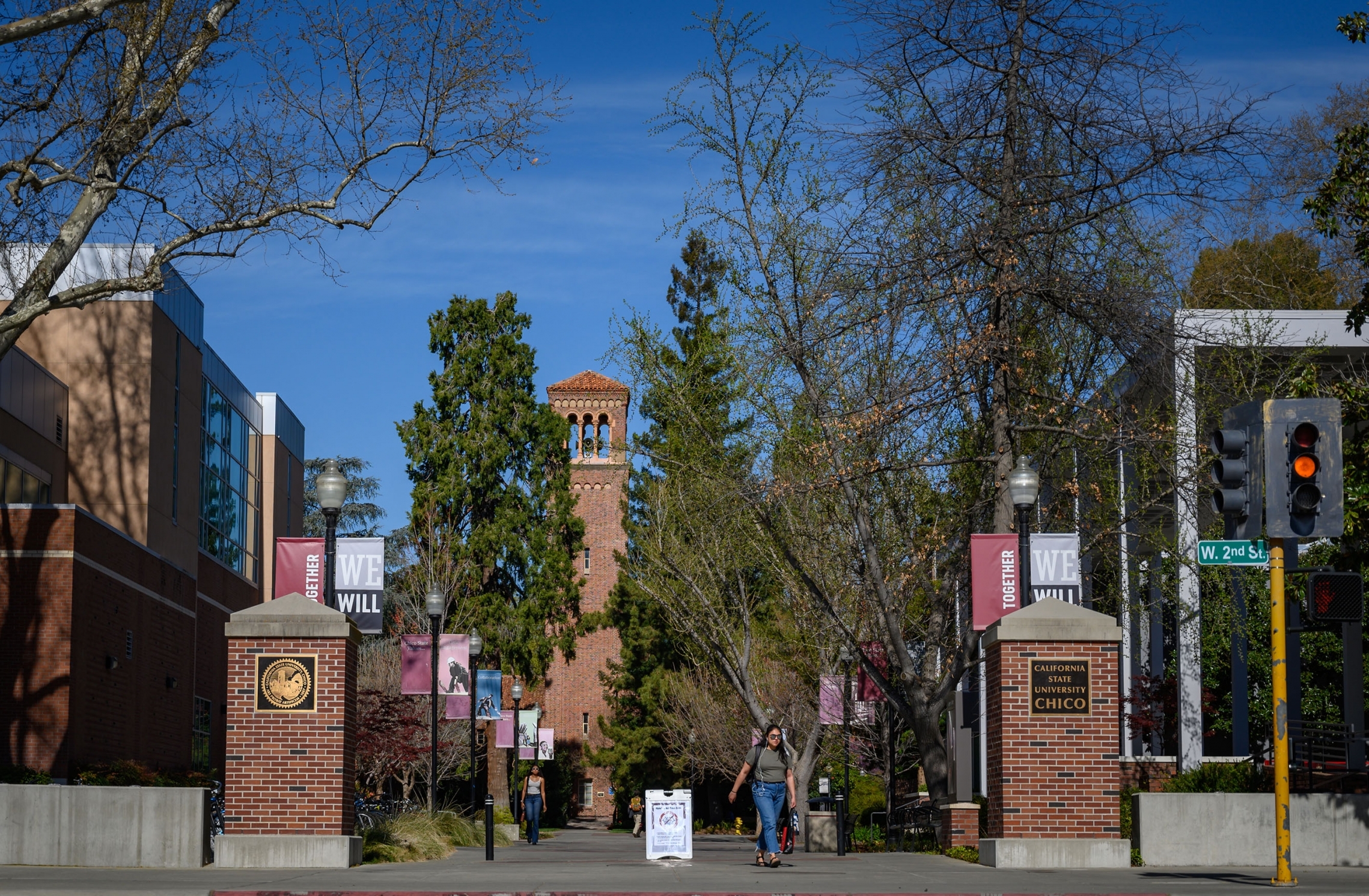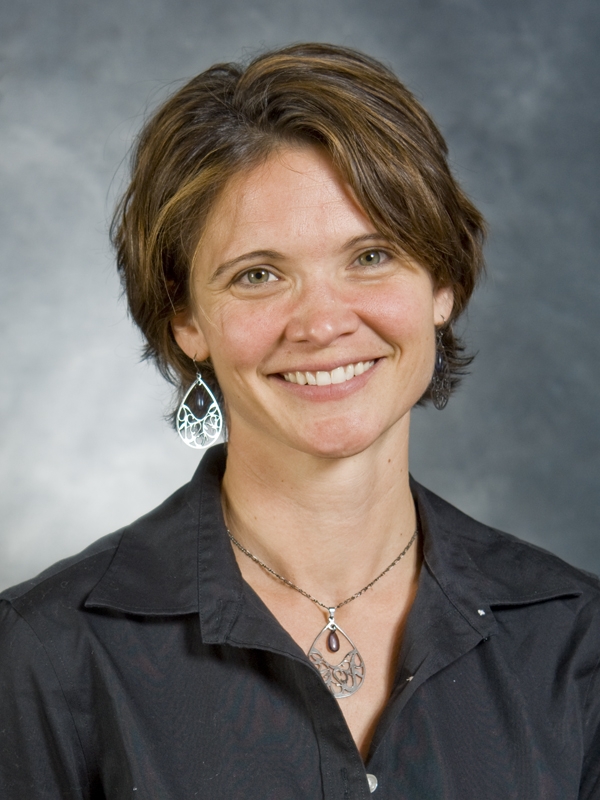Faculty Expert: Public Health Chair Holly Nevarez

A view from the south entrance to campus on Wednesday, March 11, 2020 in Chico, Calif. (Jason Halley/University Photographer/CSU, Chico)
By Kacey Sycamore

Holly Nevarez is the chair of the Department of Public Health and Health Services Administration. With a BS in health science and health education from Chico State, a master’s in public health from Benedictine University in her home state of Illinois, and a PhD in public health from Oregon State University, she’s an on-campus expert on public health. As the world faces a public health crisis in the form of a global pandemic, we spoke with Nevarez about how COVID-19 will change the landscape of the profession and society for years to come.
Why are social distancing and shelter-in-place measures so important?
It’s really important for a couple of reasons. Number one, we want to “flatten the curve.” When the pandemic first started, we heard that term a lot. What that means is decreasing the impact on the health care system. If everyone just went about their normal business, then the spike of people who got sick sooner would go up in a steep curve. And at some point, the more people who get sick, the more people who need medical care, and then our hospitals can’t handle that impact. Then they have to make really hard choices [about who receives care].
The other reason to respect social distancing is a lot of people will have the virus and not know it. That means they could be spreading the virus [without knowing it]. I feel totally healthy today. I don’t have any symptoms, and I want to believe that I’m healthy, so I could go to the grocery store, right? And because I feel fine, what the heck? Why shouldn’t I go to the grocery store if I want something? The problem is, if I have been exposed to the virus, I could be carrying it and I could spread the virus, and I wouldn’t know it.
What kind of impact does a public health event like this have for vulnerable populations like people experiencing homelessness?
First, a lot of people experiencing homelessness are at increased risk for infectious diseases because they often have other underlying conditions, such as heart disease and diabetes. Additionally, people experiencing homelessness are less likely to access the healthcare system. This means they are less likely to be treated for those underlying conditions and less likely to go to a doctor if they don’t feel well. People experiencing homelessness often wait until symptoms are severe and then access the healthcare system through the emergency room. This means they are sicker once they go to get help for medical conditions.
Second, if you think about the typical services that people experiencing homelessness might utilize, they’re crowded conditions. If you picture a soup kitchen, usually you picture people waiting in line, getting their food, and then sitting down in a cafeteria-like setting. There’s no social distancing there and it increases the risk. Also, they might not have access to hand sanitizer, or even soap and water, right? Because if you were living outside somewhere, where would you wash your hands?
What will be the role of public health workers going forward?
Public health is a huge umbrella term that covers a lot of areas, but what they’re talking about after the pandemic is the need for public health workers to do continued education. People will still need to be washing their hands. Are we going to have to wear masks in the future? What’s social distancing going to look like? A lot of those answers will come from public health workers.
Thinking again to the future, what long-term public health consequences do you think there will be?
I spend a lot of time thinking about how we’re going to come out of this. It seems like it’s been a long time [since this began], and then you hear it could last for 18 months, or it’s going to last until we get a vaccine—and a vaccine is 18 months to two years away. What kind of restrictions can we implement to help us return to our normal lives? Governor Newsom has said in order for people to return to school, there has to be the ability to practice social distancing—imagine a classroom where children are six feet apart.
The other thing I think a lot about is the other repercussions of this, especially the mental health part and how we’re going to deal with that. Mental health in our country didn’t have enough resources to start, before COVID. And we definitely need more now. I don’t know how that’s going to play out into the future. All the families, all the people who don’t have jobs right now, who’ve been laid off and all the stress related to that—it’s horrible.
What message do you think is critical to share with people?
There’s so much information out there right now about COVID. It’s really important that people use reputable sources to get their information. The CDC and the World Health Organization are the go-to websites. That’s where people should be going. People should get their information from the experts. You shouldn’t just Google, or go to Facebook or Instagram. People really need to base their decisions on facts.
Kacey Sycamore works as a freelance writer, editor, and producer for public media organizations in Northern California. A Chico State journalism alum, she and her husband recently moved back to Chico to start a family.


